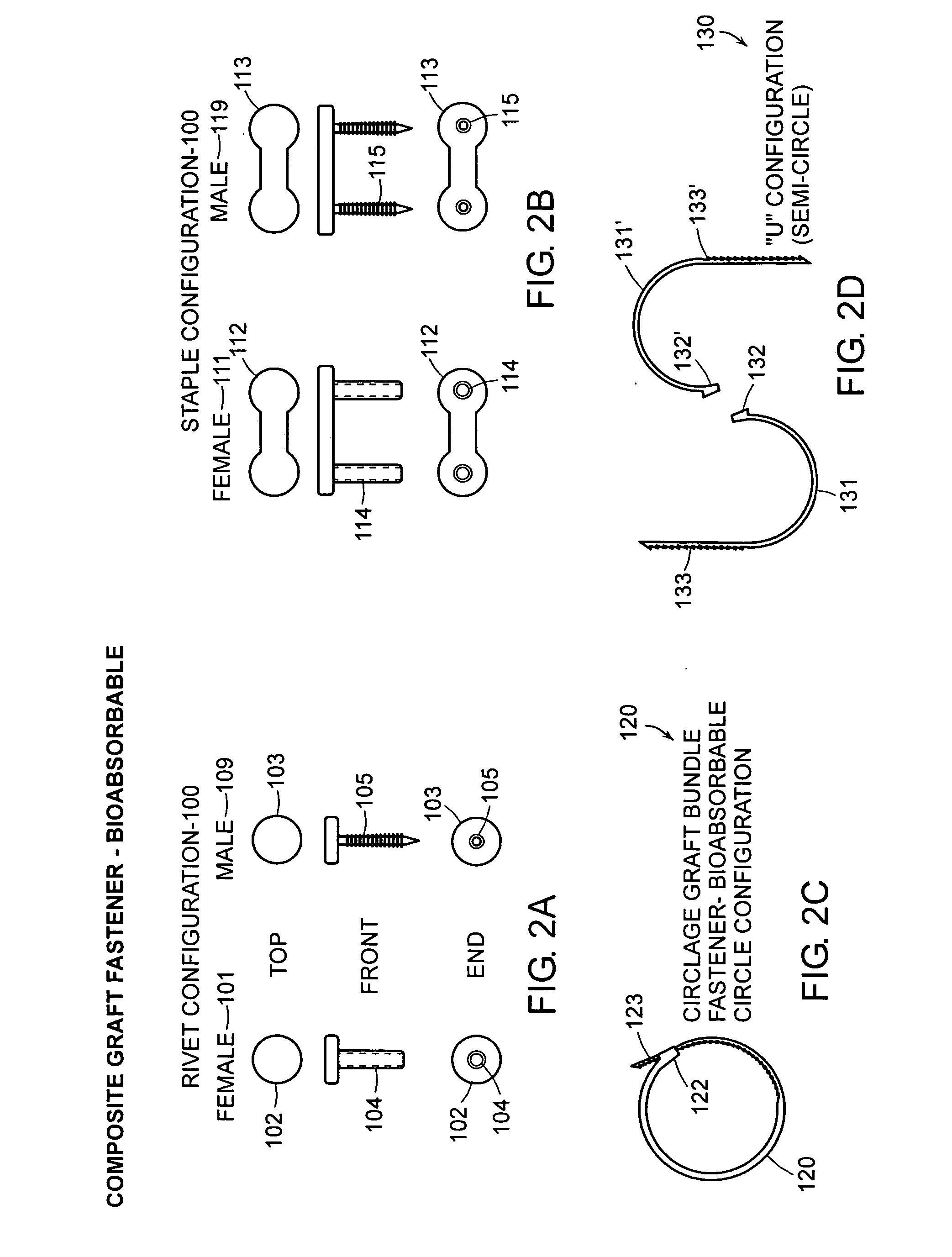Bioabsorbable fasteners for preparing and securing ligament replacement grafts
a bioabsorbable, ligament technology, applied in the field of surgical devices and procedures, can solve the problems of increased length and additional opening into the body, increased risk of infection, and variations in foot alignment,
- Summary
- Abstract
- Description
- Claims
- Application Information
AI Technical Summary
Benefits of technology
Problems solved by technology
Method used
Image
Examples
Embodiment Construction
[0044] Definitions. As used in this description and the accompanying claims, the following terms shall have the meanings indicated, unless the context otherwise requires: The term “tendon” shall refer to a soft tissue and shall be synonymous with the term ligament.
[0045] The composite grafts described utilize bone cores (plugs) taken from the patient or provided from cadaveric donors, and these plugs are combined with semi-tendinosus or other tendons taken from the patient or provided from cadaveric donors. These combined component composite grafts can be entirely autogenous, entirely allogenic, or a combination of each type resulting in an alloautograft. This construct combines the best aspects of both types of materials. For example, if a coring reamer is used to create the tunnels, the resultant bone core may be used as part of a combined alloautocomposite graft along with some autogenous ligament or tendon. The value associated with this combination relates to both types of mat...
PUM
| Property | Measurement | Unit |
|---|---|---|
| inner diameter | aaaaa | aaaaa |
| inner diameter | aaaaa | aaaaa |
| bioabsorbable | aaaaa | aaaaa |
Abstract
Description
Claims
Application Information
 Login to View More
Login to View More - R&D
- Intellectual Property
- Life Sciences
- Materials
- Tech Scout
- Unparalleled Data Quality
- Higher Quality Content
- 60% Fewer Hallucinations
Browse by: Latest US Patents, China's latest patents, Technical Efficacy Thesaurus, Application Domain, Technology Topic, Popular Technical Reports.
© 2025 PatSnap. All rights reserved.Legal|Privacy policy|Modern Slavery Act Transparency Statement|Sitemap|About US| Contact US: help@patsnap.com



